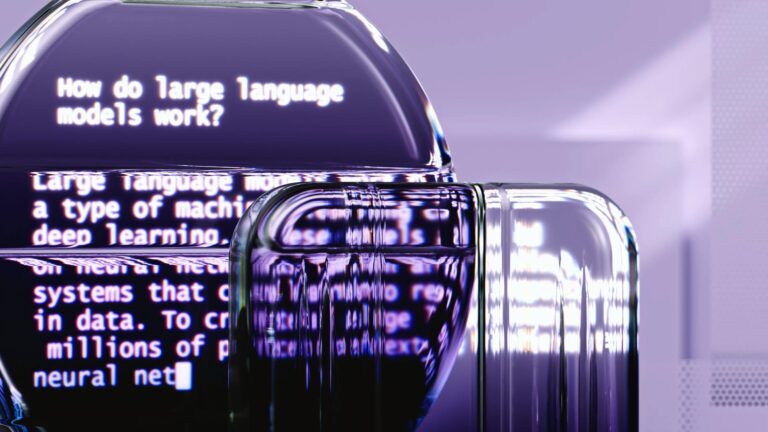
The landscape of mobile technology is constantly evolving, and a significant shift is currently underway, bringing sophisticated artificial intelligence directly to your fingertips. On-Device AI, the processing of AI tasks directly on your smartphone rather than relying on cloud servers, is rapidly transforming the capabilities of Android devices. This move towards localized intelligence promises a future where your phone is not just a tool, but a truly intelligent companion, capable of understanding and responding to your needs with unprecedented speed and privacy. This article delves deep into the world of on-device AI, exploring its benefits, applications, the underlying technologies, and what it means for the future of Android smartphones.
Understanding the Mechanics of On-Device AI
To truly appreciate the impact of on-device AI, it’s crucial to understand how it fundamentally differs from traditional cloud-based AI processing. In the past, many AI-powered features on smartphones, such as voice assistants and image recognition, relied on sending data to remote servers for processing. This introduced latency, dependence on network connectivity, and raised concerns about data privacy. On-Device AI circumvents these limitations by leveraging the powerful processors and specialized hardware integrated directly into modern Android smartphones.
The Role of Neural Processing Units (NPUs)
At the heart of on-device AI lies the Neural Processing Unit (NPU), a dedicated piece of silicon specifically designed to accelerate machine learning tasks. These NPUs are optimized for matrix multiplications and other computations essential for running neural networks efficiently. By handling these complex calculations locally, NPUs enable faster processing times and reduced power consumption compared to relying solely on the central processing unit (CPU) or graphics processing unit (GPU). This dedicated hardware is a key differentiator, allowing for real-time AI processing for a variety of applications.
Key Advantages of Localized Intelligence
The shift towards on-device AI brings a multitude of benefits that enhance the user experience and address some critical limitations of cloud-based AI.
- Enhanced Privacy: Processing data locally means sensitive information, such as voice commands and personal photos, doesn’t need to be sent to remote servers, significantly improving user privacy and security.
- Reduced Latency: By eliminating the need for data to travel to and from the cloud, on-device AI enables near-instantaneous responses, leading to a smoother and more seamless user experience.
- Offline Functionality: Features powered by on-device AI can continue to function even without an internet connection, providing greater reliability and accessibility in various situations.
- Improved Efficiency: Local processing can be more power-efficient for certain tasks, as it reduces the energy consumption associated with data transmission and cloud server usage.
- Personalized Experiences: On-device AI can learn and adapt to individual user behavior and preferences more effectively, leading to highly personalized experiences tailored to specific needs.
The Expanding Applications of On-Device AI in Android
The capabilities unlocked by on-device AI are rapidly being integrated into various aspects of the Android ecosystem, transforming how we interact with our smartphones.
Intelligent Photography and Videography
One of the most prominent applications of on-device AI is in enhancing the camera capabilities of Android smartphones.
- Scene Recognition: AI algorithms can identify different scenes (e.g., landscapes, portraits, food) in real-time and automatically adjust camera settings for optimal results.
- Object Detection and Tracking: On-device AI enables the camera to identify and track specific objects within the frame, improving focus and enabling features like subject isolation in portrait mode.
- Computational Photography: Techniques like HDR (High Dynamic Range) processing, night mode, and super-resolution zoom are significantly enhanced by on-device AI, allowing for stunning image quality even in challenging conditions.
- Intelligent Video Editing: Features such as automatic video stabilization, object tracking in videos, and even AI-powered video editing suggestions are becoming increasingly common thanks to local processing power.
Enhanced Security and Biometrics
On-device AI plays a crucial role in bolstering the security features of Android devices.
- Advanced Facial Recognition: Local AI processing enables faster and more secure facial recognition for unlocking devices and authenticating payments, often incorporating liveness detection to prevent spoofing.
- Fingerprint Recognition Enhancement: AI algorithms can analyze fingerprint data more effectively, leading to improved accuracy and speed in fingerprint scanners.
- Behavioral Biometrics: On-device AI can learn a user’s unique typing patterns, scrolling behavior, and other interactions to create a behavioral profile, adding an extra layer of security by detecting anomalies.
Smarter Voice Assistants
While cloud-based processing still plays a role, on-device AI is making voice assistants on Android more responsive and private.
- Faster Wake Words: Local processing allows for quicker and more accurate detection of wake words like “Hey Google,” initiating the assistant without needing an immediate internet connection.
- Offline Voice Commands: Basic voice commands for tasks like opening apps, making calls, and setting alarms can now be processed locally, even without network access.
- Personalized Voice Recognition: On-device AI can learn a user’s voice patterns over time, improving the accuracy of voice recognition.
Improved Battery Life and Performance
Surprisingly, on-device AI can also contribute to better battery life and overall device performance.
- Intelligent Power Management: AI algorithms can learn usage patterns and optimize power consumption by intelligently managing background processes and app activity.
- Adaptive Performance: On-device AI can predict resource demands and allocate CPU and GPU power more efficiently, leading to smoother multitasking and gaming experiences.
- Smart Caching: AI can analyze app usage and predict which data is most likely to be needed next, pre-caching it in memory for faster access and reduced loading times.
Accessibility Enhancements
On-device AI is also enabling significant advancements in accessibility features for Android users.
- Real-time Transcription: Live Caption, a feature powered by on-device AI, can transcribe audio and video content in real-time, making it accessible to individuals with hearing impairments.
- Image Description: AI algorithms can analyze images and provide verbal descriptions for visually impaired users.
- Smart Text Selection and Prediction: On-device AI can understand context and predict the next word or phrase a user intends to type, improving typing speed and accuracy for everyone.
The Underlying Technologies Powering On-Device AI
The advancements in on-device AI are driven by a confluence of cutting-edge technologies.
Advanced Mobile Processors
Modern smartphone chipsets, particularly those from manufacturers like Qualcomm (Snapdragon series) and MediaTek (Dimensity series), feature increasingly powerful CPUs, GPUs, and dedicated NPUs. These advancements in silicon design are crucial for handling the computational demands of complex AI models.
Efficient Machine Learning Models
Researchers and engineers are constantly developing more efficient and compact machine learning models that can run effectively on mobile devices with limited resources. Techniques like model quantization and pruning help reduce the size and computational complexity of these models without significant loss in accuracy.
Innovative Software Frameworks
Software frameworks like TensorFlow Lite and MediaPipe provide developers with the tools and libraries necessary to build and deploy on-device AI applications for Android. These frameworks are optimized for mobile environments and enable efficient execution of machine learning models.
The Future Trajectory of On-Device AI
The field of on-device AI is still in its early stages, and we can expect even more groundbreaking advancements in the years to come.
Enhanced Personalization and Contextual Awareness
Future on-device AI will likely become even more personalized and contextually aware, anticipating user needs and providing proactive assistance based on their location, time of day, and activities.
Seamless Integration Across Devices
We may see on-device AI seamlessly integrated across various devices within the Android ecosystem, such as smartphones, tablets, and wearables, creating a more unified and intelligent user experience.
More Sophisticated Offline Capabilities
As on-device AI models become more powerful, we can expect more complex tasks to be performed offline, reducing our reliance on constant internet connectivity.
Ethical Considerations and Responsible AI
As on-device AI becomes more deeply integrated into our lives, ethical considerations surrounding data privacy, bias in algorithms, and responsible use of AI will become increasingly important. Developers and policymakers will need to address these challenges proactively.
FAQs About On-Device AI
What are the main benefits of on-device AI compared to cloud-based AI?
On-device AI offers several key advantages, including enhanced privacy, reduced latency, offline functionality, improved efficiency, and more personalized experiences.
How does on-device AI improve the security of my Android phone?
On-device AI enhances security through faster and more secure facial recognition, improved fingerprint scanning, and the potential for behavioral biometrics, all processed locally without sending sensitive data to the cloud.
Will on-device AI drain my phone’s battery faster?
While AI processing can be power-intensive, dedicated NPUs and efficient machine learning models are designed to minimize battery drain. In many cases, on-device AI can actually improve battery life through intelligent power management.
What kind of applications currently use on-device AI on Android?
Many popular Android features leverage on-device AI, including intelligent camera features, voice assistants, security enhancements, accessibility tools like Live Caption, and performance optimizations.
Is on-device AI available on all Android smartphones?
On-device AI capabilities vary depending on the smartphone’s processor and hardware. Newer, high-end devices typically have more powerful NPUs and thus offer more advanced on-device AI features.
Conclusion: Embracing the Intelligent Revolution
On-Device AI represents a paradigm shift in mobile computing, bringing the power of artificial intelligence directly to our Android smartphones. This localization of intelligence unlocks a wealth of benefits, from enhanced privacy and security to faster performance and more personalized experiences. As the technology continues to evolve, we can expect on-device AI to become even more integral to our daily lives, transforming our smartphones into truly intelligent companions capable of understanding, anticipating, and responding to our needs in profound new ways. The future of Android is intelligent, and it’s happening right in the palm of your hand.




